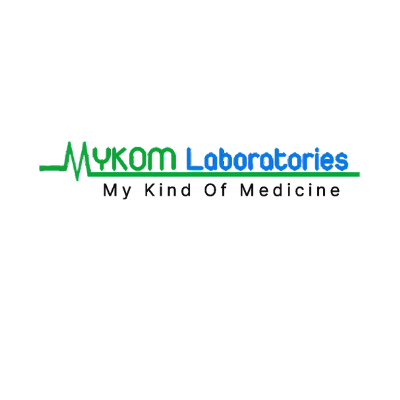Global Genomics Market: Growth Opportunities by Region
Global Genomics Market Overview: Size, Growth, Trends & Future Outlook
The global genomics market is witnessing rapid growth, driven by advances in technology, rising investments in research, and expanding applications in personalized medicine. Genomics, the study of genomes and their functions, is revolutionizing healthcare by enabling more accurate disease diagnosis, targeted therapies, and drug development. According to recent estimates, the global genomics market size stood at approximately USD 33.4 billion in 2025 and is projected to reach USD 94.1 billion by 2033, growing at a CAGR of 14.3% during the forecast period.
Download A Sample Report HERE: https://m2squareconsultancy.com/request-sample/global-genomics-market
Global Genomics Market Overview
The genomics industry has expanded from being a niche research field to becoming a cornerstone of modern healthcare and biotechnology. Key areas fueling the genomics market growth include:
Personalized Medicine – Tailoring treatments based on genetic profiles improves patient outcomes and reduces side effects.
Drug Discovery & Development – Genomics accelerates the identification of drug targets, enhancing efficiency in pharmaceutical research.
Disease Diagnostics – Early detection of cancer, rare genetic disorders, and infectious diseases relies heavily on genomic testing.
Agriculture & Biotechnology – Beyond healthcare, genomics is also transforming crop improvement and livestock genetics.
Key Drivers of Genomics Industry Growth
Technological Advancements
The cost of sequencing a genome has fallen dramatically, thanks to next-generation sequencing (NGS) technologies. This has made genomic testing more accessible, boosting adoption across hospitals, labs, and research centers.
Rising Research Investments
Governments and private organizations are increasing funding in genomics research. This investment is accelerating breakthroughs in diagnostics, precision medicine, and therapeutics.
Growing Demand for Personalized Medicine
Patients and healthcare systems are shifting towards individualized treatments, driving demand for genomic testing. This trend is expected to remain a key driver for the genomics market forecast through 2033.
Integration with AI & Bioinformatics
The combination of genomics with artificial intelligence, cloud computing, and big data analytics is improving the speed and accuracy of genomic analysis, opening new opportunities for the industry.
Genomics Market Trends
The genomics market report highlights several emerging trends shaping the future of the industry:
Rise of Direct-to-Consumer Genomics: Companies are offering affordable genetic testing kits directly to consumers, allowing individuals to understand ancestry, health risks, and lifestyle recommendations.
Expansion into Clinical Diagnostics: Genomics is becoming a standard tool in oncology, cardiology, and rare disease detection.
Collaborations & Partnerships: Pharmaceutical companies, research institutes, and genomics firms are collaborating to develop advanced solutions.
Ethical & Regulatory Frameworks: As the industry grows, governments are implementing regulations to ensure patient data privacy and ethical use of genomic data.
Genomics Market Size & Forecast
The genomics industry report indicates strong growth momentum in both developed and emerging markets.
2025 Market Size: USD 33.4 billion
2033 Market Size: USD 94.1 billion
CAGR: 14.3% (2025–2033)
North America currently dominates the genomics market share due to strong research infrastructure and healthcare spending. However, Asia-Pacific is expected to show the fastest growth, supported by rising adoption of genomic technologies, government funding, and increasing healthcare awareness.
Future Outlook of the Genomics Industry
The genomics market analysis suggests that the future will be defined by:
Widespread adoption of genomic medicine in everyday healthcare.
Integration of genomics with digital health tools, such as wearable devices and telemedicine platforms.
Expansion in agricultural genomics, improving food security and crop resilience.
Global collaborations to accelerate discoveries while addressing ethical concerns.
As genomic technologies become more affordable and widely available, they will continue to transform not only healthcare but also industries such as agriculture, biotechnology, and pharmaceuticals.
Key Takeaways
The genomics market size is expected to grow from USD 33.4 billion in 2025 to USD 94.1 billion by 2033.
Technological innovations, especially NGS and bioinformatics, are driving industry growth.
Personalized medicine and disease diagnostics remain the top application areas.
North America leads the genomics market share, while Asia-Pacific shows the fastest growth potential.
The future of genomics will be shaped by AI integration, ethical frameworks, and expanding applications in healthcare and agriculture.
North America leads the genomics market share, while Asia-Pacific shows the fastest growth potential.
The future of genomics will be shaped by AI integration, ethical frameworks, and expanding applications in healthcare and agriculture.
Frequently Asked Questions (FAQ) on the Global Genomics Market
What is the size of the Genomics Market in 2025?
What is the Genomics Market Forecast for Next 10 Year?
Which regions dominate the Global Genomics Market Share?
What are the emerging Genomics Market Trends?
Who are the key players in the Genomics Industry Report?
Why is the Genomics Market growing so fast?
What is the future outlook for the Genomics Market?
Which region dominates the genomics market?
Conclusion
The Global Genomics Market is on a transformative growth journey, fueled by rapid technological progress, increasing healthcare demands, and the rising importance of personalized medicine. With a projected market size of USD 94.1 billion by 2033, the genomics industry presents significant opportunities for researchers, healthcare providers, and investors.
To Summarize the Key Highlights of this Related Report:
https://m2squareconsultancy.com/reports/minimally-invasive-surgical-instruments-market
https://m2squareconsultancy.com/reports/personalized-nutrition-and-supplements-market
About m2squareconsultancy :
We are a purpose-driven market research and consulting company passionate about turning data into direction. Founded in 2023, we bring together researchers, strategists, and data scientists who believe that intelligence isn’t just about numbers, it’s about insight that sparks progress.
We cater to a wide range of industries by delivering customized solutions, strategic insights, and innovative support that help organizations grow, adapt, and lead in their respective sectors.
Contact Us:
Email: sales@m2squareconsultancy.com
Phone (IN): +91 80978 74280
Phone (US): +1 929 447 0100
Global Genomics Market Overview: Size, Growth, Trends & Future Outlook
The global genomics market is witnessing rapid growth, driven by advances in technology, rising investments in research, and expanding applications in personalized medicine. Genomics, the study of genomes and their functions, is revolutionizing healthcare by enabling more accurate disease diagnosis, targeted therapies, and drug development. According to recent estimates, the global genomics market size stood at approximately USD 33.4 billion in 2025 and is projected to reach USD 94.1 billion by 2033, growing at a CAGR of 14.3% during the forecast period.
Download A Sample Report HERE: https://m2squareconsultancy.com/request-sample/global-genomics-market
Global Genomics Market Overview
The genomics industry has expanded from being a niche research field to becoming a cornerstone of modern healthcare and biotechnology. Key areas fueling the genomics market growth include:
Personalized Medicine – Tailoring treatments based on genetic profiles improves patient outcomes and reduces side effects.
Drug Discovery & Development – Genomics accelerates the identification of drug targets, enhancing efficiency in pharmaceutical research.
Disease Diagnostics – Early detection of cancer, rare genetic disorders, and infectious diseases relies heavily on genomic testing.
Agriculture & Biotechnology – Beyond healthcare, genomics is also transforming crop improvement and livestock genetics.
Key Drivers of Genomics Industry Growth
Technological Advancements
The cost of sequencing a genome has fallen dramatically, thanks to next-generation sequencing (NGS) technologies. This has made genomic testing more accessible, boosting adoption across hospitals, labs, and research centers.
Rising Research Investments
Governments and private organizations are increasing funding in genomics research. This investment is accelerating breakthroughs in diagnostics, precision medicine, and therapeutics.
Growing Demand for Personalized Medicine
Patients and healthcare systems are shifting towards individualized treatments, driving demand for genomic testing. This trend is expected to remain a key driver for the genomics market forecast through 2033.
Integration with AI & Bioinformatics
The combination of genomics with artificial intelligence, cloud computing, and big data analytics is improving the speed and accuracy of genomic analysis, opening new opportunities for the industry.
Genomics Market Trends
The genomics market report highlights several emerging trends shaping the future of the industry:
Rise of Direct-to-Consumer Genomics: Companies are offering affordable genetic testing kits directly to consumers, allowing individuals to understand ancestry, health risks, and lifestyle recommendations.
Expansion into Clinical Diagnostics: Genomics is becoming a standard tool in oncology, cardiology, and rare disease detection.
Collaborations & Partnerships: Pharmaceutical companies, research institutes, and genomics firms are collaborating to develop advanced solutions.
Ethical & Regulatory Frameworks: As the industry grows, governments are implementing regulations to ensure patient data privacy and ethical use of genomic data.
Genomics Market Size & Forecast
The genomics industry report indicates strong growth momentum in both developed and emerging markets.
2025 Market Size: USD 33.4 billion
2033 Market Size: USD 94.1 billion
CAGR: 14.3% (2025–2033)
North America currently dominates the genomics market share due to strong research infrastructure and healthcare spending. However, Asia-Pacific is expected to show the fastest growth, supported by rising adoption of genomic technologies, government funding, and increasing healthcare awareness.
Future Outlook of the Genomics Industry
The genomics market analysis suggests that the future will be defined by:
Widespread adoption of genomic medicine in everyday healthcare.
Integration of genomics with digital health tools, such as wearable devices and telemedicine platforms.
Expansion in agricultural genomics, improving food security and crop resilience.
Global collaborations to accelerate discoveries while addressing ethical concerns.
As genomic technologies become more affordable and widely available, they will continue to transform not only healthcare but also industries such as agriculture, biotechnology, and pharmaceuticals.
Key Takeaways
The genomics market size is expected to grow from USD 33.4 billion in 2025 to USD 94.1 billion by 2033.
Technological innovations, especially NGS and bioinformatics, are driving industry growth.
Personalized medicine and disease diagnostics remain the top application areas.
North America leads the genomics market share, while Asia-Pacific shows the fastest growth potential.
The future of genomics will be shaped by AI integration, ethical frameworks, and expanding applications in healthcare and agriculture.
North America leads the genomics market share, while Asia-Pacific shows the fastest growth potential.
The future of genomics will be shaped by AI integration, ethical frameworks, and expanding applications in healthcare and agriculture.
Frequently Asked Questions (FAQ) on the Global Genomics Market
What is the size of the Genomics Market in 2025?
What is the Genomics Market Forecast for Next 10 Year?
Which regions dominate the Global Genomics Market Share?
What are the emerging Genomics Market Trends?
Who are the key players in the Genomics Industry Report?
Why is the Genomics Market growing so fast?
What is the future outlook for the Genomics Market?
Which region dominates the genomics market?
Conclusion
The Global Genomics Market is on a transformative growth journey, fueled by rapid technological progress, increasing healthcare demands, and the rising importance of personalized medicine. With a projected market size of USD 94.1 billion by 2033, the genomics industry presents significant opportunities for researchers, healthcare providers, and investors.
To Summarize the Key Highlights of this Related Report:
https://m2squareconsultancy.com/reports/minimally-invasive-surgical-instruments-market
https://m2squareconsultancy.com/reports/personalized-nutrition-and-supplements-market
About m2squareconsultancy :
We are a purpose-driven market research and consulting company passionate about turning data into direction. Founded in 2023, we bring together researchers, strategists, and data scientists who believe that intelligence isn’t just about numbers, it’s about insight that sparks progress.
We cater to a wide range of industries by delivering customized solutions, strategic insights, and innovative support that help organizations grow, adapt, and lead in their respective sectors.
Contact Us:
Email: sales@m2squareconsultancy.com
Phone (IN): +91 80978 74280
Phone (US): +1 929 447 0100
0
0 Reacties
0 Aandelen


